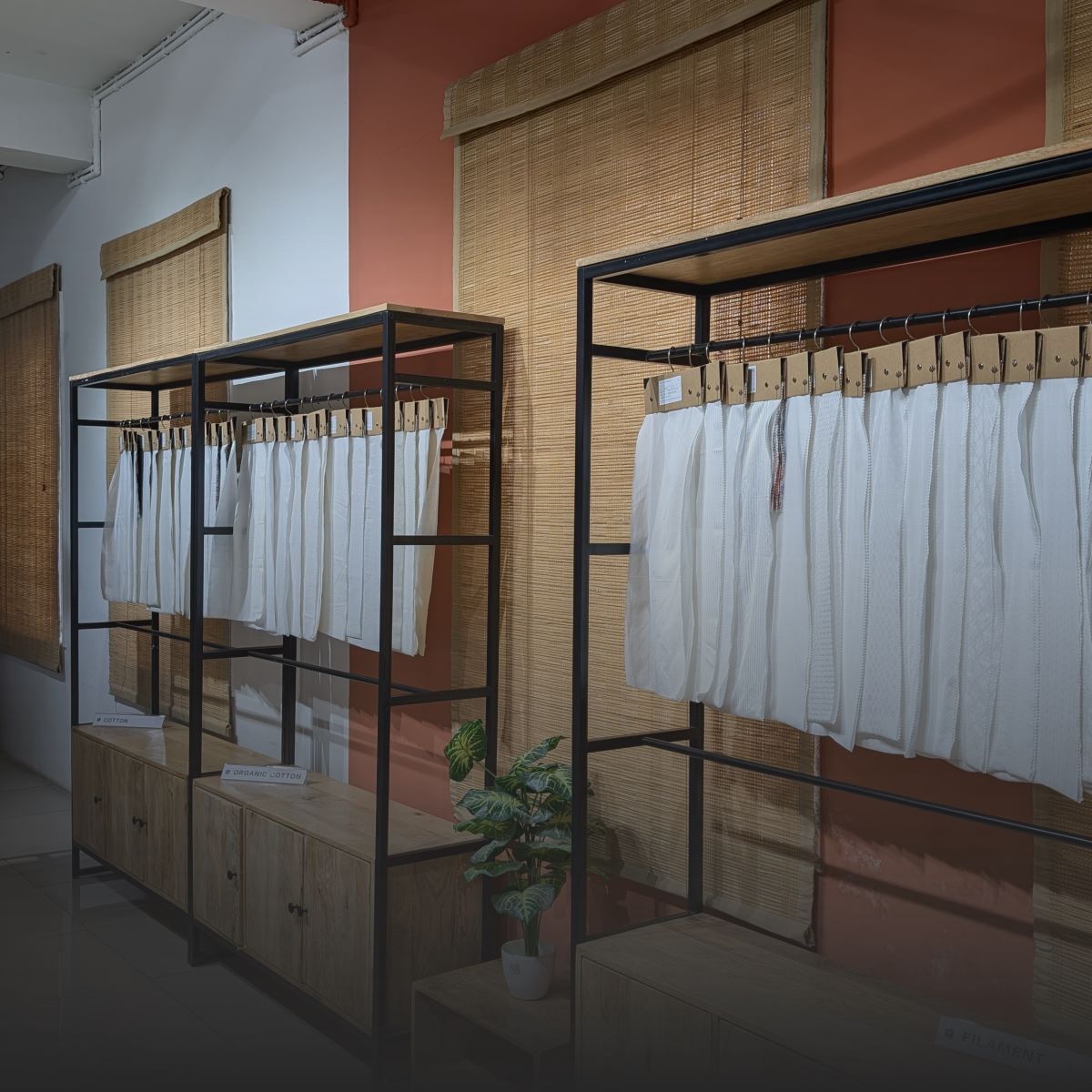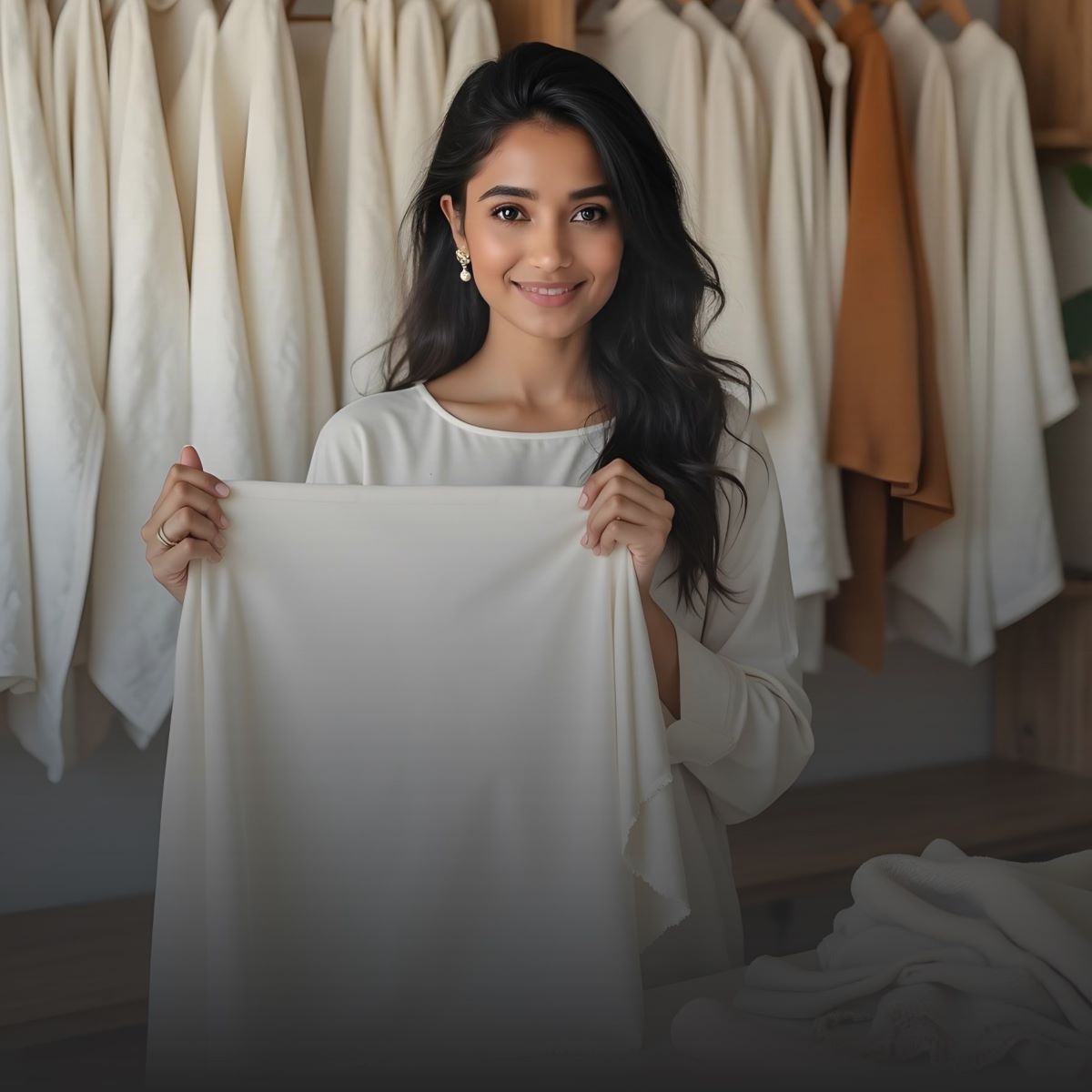In the competitive industry of style, matching your fashion clothing collection to the USA fashion calendar is not only a good idea but also absolutely necessary. Whether you're just starting out or have already established a reputation, staying in the spotlight, meeting the needs of the market, and growing your brand's presence all depend on your knowledge of the fashion seasons.
As a leading fabric wholesale supplier, we recognise the significance of aligning your creations with the perfect season—particularly when it comes to sourcing textiles for export or international collections.
In this article, we’ll dive deep into the art of organising your collections to align with the fashion timeline of the United States, considering style, climate, and the nuances of human behaviour.
You can Also Read This For More Related Information: Top Sustainable fashion brands In USA
Understanding The Fashion Calendar In The USA

To plan around the fashion seasons, you must first know what the industry calendar looks like. It's not just about the clothes; you have to time your collection just right to meet the needs of buyers and customers.
i. The Big Four Fashion Seasons
In the United States, the fashion industry typically revolves around four major seasons:
- Spring/Summer (SS) – Released around September for buyers and shown on runways six months ahead.
- Fall/Winter (FW) – Unveiled in February, often seen as the most critical season for fashion houses due to the layering and richer collections.
- Resort/Cruise – A transitional collection shown post-summer, meant for holiday travel and warmer regions.
- Pre-Fall – Shown just before Fall collections, it often acts as a teaser and comprises wearable, commercial pieces.
Each season isn't just a time marker—it defines the mood, fabrics, and silhouettes. For instance, spring/summer collections emphasize light fabrics, breezy cuts, and vibrant prints. Conversely, fall/winter is about layering, structure, and warmth.
ii. Importance of Timing in Fashion Launches
If you're not on-cycle, you might miss wholesale chances and disappoint your audience. Buyers make budgets and plans for buying months ahead of time. For example, you're already late to the party by putting out an autumn line in September.
Your fall line should be ready to show off by February or March. People are also becoming more aware of fashion trends, especially since e-commerce and social media immediately make runway looks available.
Key Fashion Seasons And What They Mean
While timing is important, grasping the core of each fashion season can truly refine your collection to align with the market's needs.
i. Spring/Summer (SS)
The Spring/Summer season is typically seen as the vibrant and more cheerful counterpart in the fashion calendar. Consider breathable fabrics such as cotton and linen, along with floral prints, pastel hues, and relaxed silhouettes. This season in the U.S. begins in early March and continues until August. Designers ought to concentrate on:
- Daywear essentials: sundresses, shorts, tank tops.
- Resort wear: swimsuits, cover-ups, travel-friendly pieces.
- Transitional layering: for cooler spring months.
Keep in mind that the weather in different parts of the United States of America In California, summer can start early, but it might stay cold in the Northeast until May.
ii. Fall/Winter (FW)
This season, Fall/Winter, stands out as a prime opportunity for profit, characterised by opulent textures, deep hues, and thoughtful layering techniques. Anticipated launches will take place from late August to November, with development commencing as early as December of the preceding year. Your collection has the potential to include:
- Coats and outerwear: trench coats, wool jackets, puffers.
- Knitwear and layering pieces.
- Warm palettes: burgundy, camel, forest green.
Keep in mind the importance of holiday-themed fashion for late November and December—this represents a significant retail opportunity.
iii. Resort/Cruise Collection
This time of year is a beautiful bridge between autumn and spring. It started out as a concept for wealthy travellers, but now it's its own season, starting in November and going through January. Choices that are ideal include:
- Lightweight maxi dresses
- Vacation-ready coordinates
- Bright, playful patterns
This collection serves as a valuable tool for designers to explore and refine their ideas in a more dynamic and enjoyable manner.
iv. Pre-Fall Collection
Pre-Fall collections are based on sales and give customers a more usable look at the main Fall line. It usually comes out between May and July, which is the change from spring and summer to cooler months.
This group of things should:
- Include classic silhouettes with new twists.
- Offer wardrobe basics with a seasonal edge.
- Be functional yet fashionable.
This season, without the major runway shows, presents an excellent opportunity to strengthen buyer relationships and uphold brand visibility.
You can Also Read This For More Related Information: Private Label Fashion Brand In USA
Market Research And Trend Forecasting In Fashion

For success in fashion, it's essential that your ideas resonate with the desires of your audience. This is the point at which market research becomes essential.
i. How to Predict What Will Sell
First, look at facts, like past sales, competitor strategies, and buying patterns based on the time of year. Then, keep an eye on "real-world trends" like changes in social media, street style, the actions of influencers, and changes in shopping. Things to keep an eye on:
- What colors are trending?
- Are people opting for casual or elevated basics?
- Which garments sold out last year at the same time?
To learn more, use "social listening tools," "customer feedback," and "surveys." Also, remember to make "buyer personas" for every season.
Key Statistics:
- Global Fashion Market Projection: According to studies, the global fashion market is expected to reach $1.84 trillion by 2025.
- U.S. Fashion eCommerce Revenue Growth: Firework says that USA fashion eCommerce sales will rise from $183 billion in 2021 to $300 billion by 2027.
- U.S. Fashion Market Revenue Forecast: Statista research shows that the USA fashion market will bring in $217.05 billion by 2025, growing at a rate of 8.28% per year.
- Fast Fashion Industry Valuation: The fast fashion industry currently holds a valuation of $150.82 billion and is experiencing an annual growth rate of 10.74%. Projections suggest that this sector could expand to $291.1 billion by the year 2032.
ii. Using Fashion Forecasting Services
WGSN, Trendstop, Peclers Paris, and Fashion Snoops are some fashion forecasting applications that you might want to buy to get an edge. Up to two years into the future, these tools can tell you a lot about colour trends, materials, and customer behaviour. It's almost like having a crystal ball for your design process.
Why It Matters
- Orbis Research says that the global fashion predicting service market will grow because more people want to learn from data.
- It is also expected that Generative AI in fashion will grow from $96.5 million in 2023 to $2.23 billion by 2032 (FashionUnited).
- These tools are pricey, but they are very useful for large-scale production or names that want to be placed in department stores.
Designing With Seasons In Mind

Designing is more than just being creative; it also requires careful thought about plan. The core and usefulness of the next season should come through in every sketch you make.
i. Color Palettes and Fabrics for Each Season
Colours inspire feelings and significance. Spring embraces pastels, whereas autumn celebrates earthy tones. Start with Pantone’s seasonal colour reports as your foundation and then tailor them to your needs. Here’s a helpful guide:
|
Season |
Popular Colors |
Recommended Fabrics |
|
Spring/Summer |
Sky blue, coral, mint, white |
Cotton, chambray, jersey, linen |
|
Fall/Winter |
Maroon, mustard, navy, taupe |
Wool, tweed, velvet, corduroy |
|
Resort |
Bright yellow, aqua, coral pink |
Rayon, silk, light knits |
|
Pre-Fall |
Olive, beige, burgundy |
Light wool, transitional blends |
Additionally, it's important for fabrics to embody practicality. A heavy wool coat in July is not something anyone desires.
ii. Adapting Global Trends to Local Tastes
In Milan or Tokyo, a style might look great, but will it work in New York or Texas? Probably not all the time. Remix what's important on a world level to fit local tastes and weather. Look at your main market:
- What’s trending in LA might flop in Chicago.
- Coastal cities may favor breathable fabrics over thermal ones.
- Age groups react differently to bold versus muted tones.
Knowing about the differences between places is what makes your collection more meaningful and helps it sell more quickly.
Production Timelines And Scheduling
Creating an outstanding collection is just the beginning—the true success comes from effective production planning. Unfavourable timelines can jeopardise your season before it even reaches the shelves. It's essential to strategise with the precision of a project manager while embodying the spirit of a creative visionary.
i. Backward Planning from Launch Dates
The best rule for making clothes? Start with the date you want to start and work backwards. This way for reverse engineering makes sure that every step is recorded, from drawing to shipping. To break it down, do this:
- Launch Date: Know when your items need to be in shops or online.
- Lookbook and marketing materials: Set up picture shoots at least two to three months before the launch.
- Last Samples: Try to have these ready four months before the start.
- Production start: Usually, this starts about six to seven months before your go-to-market date.
- Finding Fabrics and Trims: This should be done 7-8 months ahead of time.
-
Design Freeze: This should happen nine months before start.
If your goal is to launch in March for Spring/Summer, production should begin no later than August of the previous year.
Don't forget to account for possible delays, such as a lack of fabric, problems with shipping, or even political unrest. Add enough time to your schedule.
ii. Coordinating with Manufacturers and Suppliers
You're not the only one going through this. Manufacturers, fabric suppliers, and people who make samples for you are not just vendors; they are partners. How well you talk to them can make or break your deadline.
Early on, make sure you have these things:
- Minimum Order Quantities (MOQs)
- Lead times for fabrics and trims
- Fitting and alteration schedules
- Quality control checks
Don’t forget: When the season is busy, many makers book their slots early. You could miss the whole fashion season if you wait too long to lock them in.
As much as possible, have a backup provider. It's like having insurance for your style.
Pricing Strategies By Season
Price tags aren't magical. Fashion seasons have different market and financial demands.
i. Adjusting Prices for Seasonal Demand
Different seasons mean different consumer mindsets. Here's how that affects pricing:
- Spring/Summer: Unless for special occasions (weddings, events, travel), consumers spend less on lightweight clothing. Pricing should be competitive and include bundle discounts or capsule packages.
- Fall/Winter: Consumers are ready to invest in outerwear, footwear, and knitwear. Increasing these prices while still keeping the sense of value intact is possible.
- Holiday/Resort: This place is all about spontaneous purchases. Develop exclusive items, enhance gift-ready packaging, and foster a sense of urgency through countdowns.
Also, leaving room for sales is smart, especially when the season is over.
ii. Factoring in Production Costs and Margins
To maintain profitability, your pricing formula should consider every cost involved:
- Material + Labor + Packaging + Shipping + Marketing + Miscellaneous.
- Add your desired profit margin (typically 50-70% for D2C brands).
- Cross-reference with competitor pricing.
Let's say your product costs $30 to make, and you want a 70% margin:
- Selling price = $30 ÷ (1 - 0.70) = $100.
If you're involved in wholesaling, just double those numbers. Retailers anticipate a minimum of 2.2 times the wholesale cost as markup.
Never undervalue your worth due to fear. Recognize your worth—and express it through your branding, materials, and narratives.
Marketing Campaigns Aligned With Fashion Seasons

Marketing must be as season-specific as design because what's the point of a beautiful collection if no one sees it?
i. Seasonal Themes and Storytelling
People don't just buy clothes—they buy stories. Build narratives around your collection:
- Spring/Summer: Freedom, nature, renewal
- Fall/Winter: Nostalgia, warmth, sophistication
- Holiday/Resort: Escape, sparkle, celebration
Create mood boards for design, your campaign shoots, email marketing visuals, and social content.
Use storytelling formats like:
- Behind-the-scenes videos
- "From sketch to studio" reels
- Designer voiceovers
- Seasonal lookbooks in blog/magazine style
The better your story, the deeper your audience connects.
ii. Social Media and Influencer Collaborations
Instagram and TikTok are the new front rows of fashion. Collaborate with influencers who align with your season's vibe.
For example:
- Spring? Work with travel bloggers and sustainable fashion creators.
- Fall? Partner with cozy lifestyle influencers or minimalist style gurus.
Start the hype cycle early. Sneak peaks, countdowns, and influencer previews should start 6-8 weeks before debut. Poll on colorways or styling advice to engage your audience.
Seasonal drops operate best with exclusivity and urgency. Think "limited stock,” "seasonal only," or "one-time drop."
Wholesale vs. Direct-to-Consumer Considerations
How you plan around fashion seasons can be greatly affected by how you choose to distribute your products.
i. Pitching to Buyers and Retailers
You are not selling for this season when you wholesale; you are pitching for the next one. That's why it's important to plan ahead.
What you need is this:
- A line sheet that lists the product's details, its selling price, and the minimum order size
- A clear time frame for delivery
- Lookbooks and examples of good quality
- A story or unique selling point that fits with the look of the store
Get in touch with stores 6 to 9 months before the delivery time. Meet people who want to buy things in person at trade shows like MAGIC Las Vegas or Coterie New York.
Get to know people. Your Pre-Fall collection could be the reason you land a flagship retail deal.
Note: D2C offers higher profits and brand control but requires strong marketing and careful inventory planning. Timing seasonal launches with smart campaigns is key to success.
Inventory Management Based On Seasonality

No matter how lovely your designs are, you may have dead stock or lost revenues if your product isn't seasonal. Seasonal inventory planning balances supply, demand, timing, and risk.
i. Forecasting Sales Volume Per Season
Start by looking at facts from the past. What did you sell most this Spring? What did Winter leave behind? Sales trends are honest and can tell you a lot.
How to make plans:
- Analyze Past Sales: Check which styles, colors, and sizes performed well each season.
- Check Sell-Through Rates: If an item sold out within weeks, you probably under-ordered. If it lagged, you may need to reduce the quantity next time.
- Account for Trends: A rise in eco-friendly fabrics or oversized fits could shift your expected demand.
Use forecasting software if available (e.g., Stitch Labs, Inventory Planner) or even basic spreadsheets if you're starting small. The key is to plan realistically—not optimistically.
ii. Managing Overstocks and Sell-Through Rates
Managing inventory requires careful consideration—excess can result in waste, while insufficient stock can hinder sales. Monitoring your “sell-through rate" informs you about what's selling well. Strategies wisely, respond quickly and ensure you have alternatives ready for unsold inventory.
- End-of-season sales
- Scarcity messaging works
- Data-driven reorders
- Have exit strategies
Sustainability And Seasonal Planning: A Guide For Fashion Brands

It's time for green fashion, and shouldn't just affect what you make. It should also affect when and how you make it. As fashion brands move towards more ethical production, planning for the seasons is essential to reduce waste and make a bigger difference.
Fabriclore helps brands get a lot of eco-friendly materials from reputable eco-friendly fabric vendors, wholesale textile fabric suppliers, and fabric suppliers for small businesses in the US and other places.
i. Eco-Friendly Fabric Choices by Season
Fashion seasons have different climate needs; therefore, using eco-friendly materials is essential. Select sustainable fabrics by season:
|
Season |
Sustainable Fabric Options |
Why It Works |
|
Spring/Summer |
Organic cotton, bamboo, Tencel |
Lightweight, breathable, and biodegradable |
|
Fall/Winter |
Recycled wool, hemp, eco-fleece |
Warm, renewable, and offers a lower carbon footprint |
|
Resort |
Linen, Piñatex, modal blends |
Tropical-friendly and plant-based |
|
Pre-Fall |
Deadstock fabrics, blends with low-impact dyes |
Reduces textile waste and supports circular fashion |
As fabric wholesale manufacturers USA, we make sure that brands can get high-quality, eco-friendly fabrics that meet their design and environmental goals. Planning is vital, whether buying cotton fabric by the yard or trying out old materials.
ii. Reducing Waste During Seasonal Transitions
Waste in the fashion supply chain often comes from rushed decisions or overproduction. Sustainable brands are now leaning into more intentional, season-specific drops. Here’s how you can do the same:
- Made-to-order models for exclusive or limited-edition pieces
- Capsule collections that offer mix-and-match versatility
- Zero-waste pattern cutting to optimize every inch of fabric
Even packaging can be a part of your seasonal strategy. Use biodegradable mailers for Spring drops, or switch to reusable cotton totes for Fall collections—these details double as branding while reinforcing your sustainable values.
Case Studies: Successful Seasonally-Planned Collections

Let's explore how some innovative brands excel in seasonal planning.
Examples from Major US Designers
-
Tory Burch – Pre-Fall Collections: Tory's Pre-Fall lines are a lesson in high-end fashion that you can actually wear. Even though these pieces aren't as experimental as her main fall collection, they are perfect for busy women who are switching their wardrobes to fall. A result? More success in business.
-
Ralph Lauren – Resort Wear Ralph Lauren really gets the all-American, ready-to-travel look right. His Resort designs are made for wealthy people who are going on winter vacations to warm places. The brand makes money off of the idea of the jet-set lifestyle.
- Thom Browne – Fall/Winter Browne makes FW fashion shows more dramatic and almost theatrical, which works because it's very different from his more casual Pre-Fall clothes. A "halo effect" is made around the brand, and regular people are interested in it.
Lessons Learned from Seasonal Planning Successes
- Consistency + Timing = Brand Trust
- Adaptability: Even high-end brands adjust collections to seasonal demand without diluting their identity.
- Emotional Connection: Season-specific storytelling strengthens brand recall and customer loyalty.
You don't need a global runway budget to plan like the pros—you just need focus, data, and timing.
You can Also Read This For More Related Information: Top Fashion Influencers in USA
Common Mistakes In Seasonal Planning And How To Avoid Them
Every designer and brand makes mistakes; it's part of the game. However, if you plan, you can completely prevent inevitable errors.
i. Misjudging Market Demand
This typically occurs when:
- You design for yourself rather than your target audience.
- You rely too heavily on trends without considering their practicality.
- You don't verify climate data (this is important!).
Fix it: Conduct regular polls, test mini-launches, or A/B test designs using social media advertisements.
ii. Failing to Adapt to Climate Shifts
Due to global warming, standard seasonal schedules no longer work as they used to. On occasion, September in the United States can feel like July. If you release heavy coats or swimsuits at the wrong time, it can throw off your whole sales cycle.
To fix it: Keep an eye on the weather in real time and make changes to your ads and marketing properly.
iii. Poor Launch Timing
Launching a collection when people aren't interested (e.g., post-holiday financial fatigue or mid-season slumps) is a common mistake.
Fix it: Use marketing calendars to plan around shopping peaks like Black Friday, Memorial Day, and Back-to-School. Also, use early-bird strategies to build demand.
Future Trends In Fashion Season Planning

The fashion world is rapidly changing, and our approach to planning seasonal collections is adapting accordingly.
i. Digital-First Fashion Planning
Virtual showrooms, 3D samples, and trend forecasts based on AI are all things that are becoming commonplace. These tools make testing faster, waste less, and give feedback in real time, which is great for brands that change with the seasons.
ii. Micro-Seasons and Fast Reaction Models
With the influence of TikTok and Instagram, we are witnessing the emergence of “micro-seasons” that are shaped more by cultural moments than by the weather itself. Consider: “Coastal Grandma Summer,” “Mob Wife Winter,” or “Balletcore Spring.”
The emergence of fast-fashion reaction models compels even boutique brands to respond quickly and release capsule collections with little notice.
iii. Personalization and On-Demand Fashion
Brands may use technology like AI and data-driven design to show seasonal items personalised to each customer's interests, often predicting their requirements before they even know what they need. In the future, your autumn 2026 collection may be created collaboratively and dynamically with your customers.
You can Also Read This For More Related Information: How to Source Fashion Fabric for Your Clothing Business in the USA
Conclusion

This blog helps fashion brands plan collections around the U.S. fashion calendar. When brands align design, manufacturing, and marketing with seasonal demand, they may boost sales and reduce waste. It stresses the importance of market trends and fabric choices on success. Startups and rising firms can benefit from Fabriclore's season-specific materials, trend insights, minimal minimum order quantities, and professional sourcing solutions. For Spring/Summer or Fall/Winter, we, as wholesale material suppliers, can ensure you have the right materials when you need them. Choose us as your trusted fabric partner year-round.
Find More
How to Start a Successful Clothing Business in the United States (USA) in 2025
How To Design And Develop Your Clothing Business in the USA?
How to Source Fashion Fabric for Your Clothing Business in the USA
How To Set Up Production And Manufacturing For Your Clothing Business Line In The USA
How To Build Pricing And Inventory For Your Clothing Line Business In The USA?
How to Build an Online Clothing Business Store in the USA
How to Market Your Clothing Business Online in the USA
How To Use AI To Predict Fashion Trends For Your Clothing Business In The USA
FAQs – Fashion Collection Planning
Q1. How do I plan a seasonal fashion collection?
For a fashion collection to be planned according to the season, it is necessary to synchronise the design, fabric, and launch date with the demand in the market.
- Define your target season
- Research trends and colors
- Finalize fabrics and silhouettes
- Set launch and production schedule
Q2. What are the main fashion seasons in the USA?
There are four key seasons that the fashion business in the United States observes, which influence retail and design timeframes.
- Spring/Summer (March–August)
- Fall/Winter (September–February)
- Resort/Cruise (Nov–Jan)
- Pre-Fall (May–July)
Q3. When should I start designing for a fashion season?
- Beginning at least nine to twelve months before the launch season that is anticipated to occur will give for sufficient time for development and manufacturing.
- Spring/Summer: Start by June–July
- Fall/Winter: Begin by Dec–Jan
- Resort/Cruise Collection: Plan by April–May
- Pre-Fall Collection: Begin by Aug–Sept
Q4. How do fashion designers choose fabrics for each season?
Season, trend forecasts, and the requirements of the target market all play a role in choosing of fabric.
- Lightweight cottons for Spring/Summer
- Wool and velvet for Fall/Winter
- Silks for Resort wear
- Blends for Pre-Fall
Q5. What are the key steps to develop a fashion collection plan?
Design, sourcing, production, and marketing can all be simplified with the help of a solid plan, which is essential for seasonal success.




